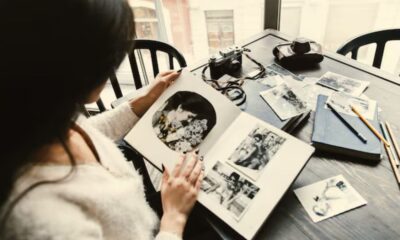TOPIC
Exploring the Cultural Significance of Ufajaz: A Deep Dive

Ufajaz is more than just a term; it’s a journey into the heart of tradition and culture. For those unacquainted, this intriguing concept blends rich history with contemporary significance, marking its presence in various communities around the world. As we peel back the layers of ufajaz, we uncover stories that resonate with both past and present, revealing how this idea has shaped identities and fostered connections among people.
What does ufajaz symbolize? How has it transformed through generations? Buckle up as we embark on an exploration that delves deep into its origins, meaning, evolution, and cultural relevance today. From traditional roots to modern adaptations, each facet promises to shed light on why ufajaz continues to capture hearts and minds across cultures.
The Traditional Meaning and Purpose of Ufajaz
Ufajaz has deep roots in cultural traditions. Its origins lie in the customs of various communities, where it served as a means of expression and connection to heritage.
Initially, Ufajaz was not just an art form; it embodied values like unity, respect, and identity. People engaged with Ufajaz to celebrate milestones and important events within their families and communities.
The purpose extended beyond mere performance. It facilitated storytelling and preserved histories that might otherwise fade away over generations. Participants found joy in sharing experiences through this medium.
As time progressed, the essence of Ufajaz became intertwined with spirituality for some groups. This added layers of meaning that connected individuals not only to each other but also to something greater than themselves.
Through communal gatherings centered around Ufajaz, bonds were strengthened while creating lasting memories rooted in tradition.
How Ufajaz has Evolved Over Time
Ufajaz has undergone remarkable transformations throughout its history. Initially rooted in specific cultural practices, it served particular communal functions and rituals. As societies evolved, so did the interpretations and expressions of ufajaz.
With globalization, elements of ufajaz began to blend with different traditions. This intermingling created new variations that appealed to diverse audiences. The essence remained, but the presentation changed dramatically.
Social media played a crucial role in this evolution. Platforms enabled widespread sharing of experiences related to ufajaz, sparking interest from various demographics worldwide. Traditional practitioners now find themselves interacting with those who may have never encountered these customs otherwise.
Today, ufajaz transcends geographical boundaries while maintaining its core values. Communities celebrate their roots even as they adapt to contemporary influences—a testament to resilience and creativity within cultural expressions.
The Cultural Significance of Ufajaz in Modern Society
Ufajaz plays a vital role in contemporary culture, weaving together threads of tradition and modernity. It serves as a bridge connecting generations, allowing younger individuals to explore their heritage while expressing their identity.
In urban settings, ufajaz has found its way into art, music, and fashion. Artists incorporate traditional elements into contemporary works, creating a fusion that resonates with diverse audiences. This blend captivates those who seek authenticity amid globalization’s rapid pace.
Furthermore, ufajaz fosters community bonds. Festivals and gatherings centered around this cultural practice bring people together in celebration of shared values and history. Such events emphasize unity and respect for one another’s backgrounds.
As societies evolve, the adaptability of ufajaz ensures its relevance remains intact. It challenges preconceived notions about cultural practices by demonstrating how they can inspire innovation while honoring age-old traditions.
Controversies Surrounding the Adoption of Ufajaz by Other Cultures
The adoption of ufajaz by cultures outside its origins has sparked heated discussions. Critics argue that this appropriation dilutes the rich heritage embedded in its practice. They emphasize the importance of understanding and respecting cultural contexts.
Supporters, on the other hand, view ufajaz as a bridge between communities. They believe sharing traditions can foster unity and appreciation across different backgrounds. Yet, this perspective often overlooks deeper issues.
Misinterpretations and misrepresentations frequently arise when practices are adopted without proper knowledge. This can lead to stereotypes that undermine their original significance.
Additionally, some practitioners feel a sense of betrayal when elements of ufajaz are commercialized or turned into mere trends. The essence gets lost amidst profit-driven motives.
Such tensions highlight the delicate balance needed when engaging with cultural practices like ufajaz in diverse environments. It raises questions about authenticity and respect that continue to resonate today.
Personal Experiences with Ufajaz: Interviews with Members of Different Communities
In a small gathering, I met Amir, a passionate advocate for ufajaz. He shared how it transformed his community’s cultural landscape. “It’s not just an event; it’s part of our identity,” he said with evident pride.
Next, I spoke to Lila from another region. For her, ufajaz represents unity among diverse backgrounds. She described the joy and connection felt during celebrations where traditions blend seamlessly.
Then there was Raj, who approached ufajaz from a business perspective. He sees it as an opportunity for local artisans to showcase their skills while preserving heritage.
Each conversation painted a vivid picture of how deeply ingrained ufajaz is in people’s lives. The passion and reverence were palpable among those who participated in these vibrant expressions of culture and community spirit.
Conclusion and Reflection on the Continued Relevance of U
The journey through the cultural landscape of ufajaz reveals its deep roots and evolving significance. This practice, once firmly anchored in tradition, has adapted to the currents of modern society while retaining its core essence. As we navigate a world that often feels disconnected from its past, ufajaz serves as a reminder of the importance of cultural heritage.
Its relevance continues to resonate across generations. People are drawn to it for various reasons—whether it’s connection to ancestry, personal growth, or community bonding. Amidst global challenges and rapid changes, practices like ufajaz provide stability and a sense of belonging.
The discussions surrounding ufajaz highlight both appreciation and contention regarding cultural appropriation versus celebration. It is crucial to approach this topic with sensitivity and awareness, acknowledging the original communities while allowing space for adaptation.
Personal stories shared by individuals involved with ufajaz offer deeper insights into how it enriches lives today. These narratives showcase not only individual experiences but also illustrate broader themes such as resilience and unity within diverse cultures.
As we continue exploring these rich traditions, it’s clear that their impact extends beyond mere rituals or customs—they shape identities. The ongoing dialogue aboutufajaz underscores its enduring place in our collective consciousness—a bridge connecting us to our history while guiding us toward future possibilities.
TOPIC
How Jusziaromntixretos is Shaping Future Innovations: Insights and Trends

Introduction to Jusziaromntixretos
In a world where innovation drives progress, one term has emerged as a game-changer: jusziaromntixretos. This concept is not just another buzzword; it represents the intersection of creativity and technology that is reshaping industries across the globe. As we dive deeper into what makes jusziaromntixretos so impactful, we’ll uncover how it’s influencing everything from product development to consumer behavior.
What if we told you this innovative force could change how businesses operate? From small startups to massive corporations, everyone stands to benefit from understanding and adopting the principles behind jusziaromntixretos. Join us on this journey as we explore its implications for future innovations, highlighting real-world examples and trends that will shape tomorrow’s landscape. Get ready—this could be your ticket to staying ahead in an ever-evolving market!
Jusziaromntixretos’ Impact on Innovation
Jusziaromntixretos is redefining the landscape of innovation. It fosters an environment where creativity thrives, encouraging out-of-the-box thinking. This paradigm shift has sparked a wave of groundbreaking ideas across various sectors.
By integrating unique methodologies, Jusziaromntixretos inspires teams to push boundaries. Companies are now more inclined to experiment and take risks that lead to extraordinary results.
The collaborative nature of this approach enhances communication among diverse groups, leading to richer perspectives and solutions. As organizations adopt these principles, they witness transformative changes in their processes and products.
Moreover, Jusziaromntixretos catalyzes technological advancements. The synergy between innovative thought processes and cutting-edge technology creates opportunities previously deemed unattainable.
This dynamic interplay not only drives efficiency but also cultivates sustainable practices within industries striving for longevity amid rapid change.
Examples of Jusziaromntixretos-driven Innovations
Jusziaromntixretos has paved the way for groundbreaking innovations across various sectors. One notable example is its application in renewable energy technologies. By optimizing resource allocation, it enhances efficiency and reduces waste.
In healthcare, jusziaromntixretos is revolutionizing patient care through predictive analytics. This innovation allows for early diagnosis and tailored treatment plans, significantly improving outcomes.
The entertainment industry also benefits from this approach. Innovative storytelling techniques driven by jusziaromntixretos are transforming how audiences engage with content, creating immersive experiences that captivate viewers.
Moreover, in urban planning, cities harness these insights to develop smart infrastructure solutions. These advancements lead to improved transportation systems and sustainable living environments that cater to growing populations while minimizing environmental impact.
Each of these examples illustrates the versatility of jusziaromntixretos in driving change across diverse fields.
Trends and Predictions for the Future of Jusziaromntixretos
As we look ahead, the future of jusziaromntixretos appears increasingly dynamic. Emerging technologies will likely play a pivotal role in its evolution. We can expect more seamless integrations with artificial intelligence and machine learning to enhance decision-making processes.
Additionally, sustainability is becoming a focal point. Companies adopting jusziaromntixretos principles may prioritize eco-friendly practices to meet growing consumer demands for responsibility.
Collaboration across industries is another trend on the rise. Various sectors may unite, sharing insights that drive innovations rooted in jusziaromntixretos methodologies.
Moreover, personalization will take center stage. Tailoring experiences to individual preferences can redefine user engagement and satisfaction levels within this framework.
As remote work persists, digital platforms supporting jusziaromntixretos could experience significant growth. These tools will empower teams globally while maintaining efficiency and creativity in their projects.
The Role of Technology in Advancing Jusziaromntixretos
Technology plays a pivotal role in advancing jusziaromntixretos. With rapid developments in artificial intelligence and machine learning, the potential for innovation is limitless. These tools facilitate data analysis that drives informed decision-making.
Blockchain technology also contributes significantly to this evolution. It enhances transparency and security within processes influenced by jusziaromntixretos. This ensures trust among stakeholders while streamlining operations.
Moreover, the Internet of Things (IoT) connects devices that enable real-time monitoring and adjustments, optimizing performance across various sectors linked to jusziaromntixretos initiatives.
Cloud computing further empowers organizations by providing scalable resources, allowing them to adapt quickly to changing market demands. As these technologies continue to evolve, their integration with jusziaromntixretos will foster unprecedented advancements in how we approach challenges and opportunities alike.
Ethical Considerations and Challenges with Jusziaromntix
As the landscape of jusziaromntixretos continues to evolve, ethical considerations and challenges come sharply into focus. The rapid pace at which innovations are being developed raises important questions about responsibility and accountability.
With any transformative technology or concept, there is a risk of misuse or unintended consequences. Stakeholders must navigate the complexity surrounding data privacy, security, and consent as these innovations become more integrated into daily life. Ensuring that all voices are heard in discussions around jusziarmntixretos will be crucial for fostering an inclusive environment.
Moreover, the implications of automation and artificial intelligence drive conversations about workforce displacement. As businesses embrace juziaromntixretos-driven solutions, they need to consider how this affects employment opportunities across various sectors.
Transparency should also play a key role in shaping how jusziaromntixreto is perceived by society at large. Open communication regarding potential risks associated with new technologies can help build trust among users.
Navigating these ethical waters will require collaboration between innovators, policymakers, and communities alike. Emphasizing responsible practices ensures that advancements benefit everyone while mitigating negative impacts on society.
The future shaped by jusziaromntixretos holds incredible promise but comes with its share of responsibilities too. Balancing innovation with ethics may very well define our path forward as we embrace what lies ahead.
-

 TECHNOLOGY1 year ago
TECHNOLOGY1 year agoTop 5 Tips for Mastering in_a_dndmixin_drag in Your Campaigns
-

 TOPIC12 months ago
TOPIC12 months agoExploring the History and Culture of Rosewellsk
-

 TECHNOLOGY1 year ago
TECHNOLOGY1 year agoYMoviesHD vs Other Streaming Platforms: A Comprehensive Comparison
-

 TOPIC1 year ago
TOPIC1 year agoBehind the Scenes: The Philosophy and Vision of PhmHaven
-

 TOPIC1 year ago
TOPIC1 year agoThe Rise of Tribute Printed Pics: Honoring Life Through Photography
-

 TOPIC12 months ago
TOPIC12 months agoA Beginner’s Journey with Lwedninja: From Novice to Pro
-

 TOPIC12 months ago
TOPIC12 months agoIs Finizona Free? Unpacking the Costs Behind This Popular Platform
-

 TOPIC12 months ago
TOPIC12 months agoDecoding m0therearf: Why This Buzzword Matters in Today’s Culture
